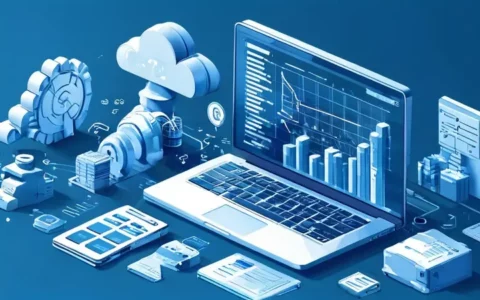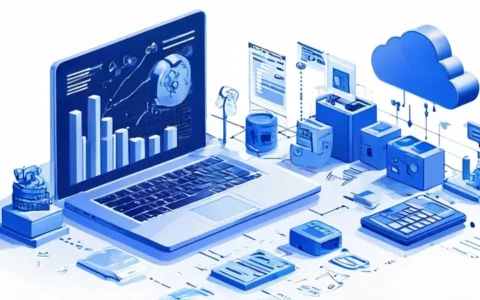
摘要开头段落直接回答标题所提问题(核心观点加粗,用阿拉伯数字加“、”隔开)并对其中一点展开详细描述(总字数控制在120到200字之间);
In the field of hardware programming, essential knowledge encompasses 1、computer architecture, 2、programming languages, 3、microcontroller theory, and 4、electronic circuit design. A deep dive into programming languages reveals that a strong grasp of languages such as C or C++ is critical. These languages make it possible to control hardware at a low level, allowing programmers to manipulate memory, manage input/output (I/O) operations, and interact directly with the hardware components. The efficiency and control provided by these languages are unparalleled in the realm of hardware programming, making them an indispensable element of a hardware programmer's toolkit.
一、UNDERSTANDING COMPUTER ARCHITECTURE
Computer architecture is the conceptual design and fundamental operational structure of a computer system. It serves as the backbone of hardware programming, as it outlines the working principles and the interaction between different hardware components. Mastery of computer architecture involves comprehending how processors work, how data travels through buses, how memory hierarchy is structured, and how peripherals are managed.
1. Processors and Execution
Understanding how a processor interprets and executes instructions is crucial. A hardware programmer should be familiar with Central Processing Unit (CPU) cycles, instruction sets, and how to write code that can efficiently use the processor's capabilities.
2. Memory Management
Knowing how various types of memory operate—such as RAM, caches, and registers—is important for optimizing program performance and resource utilization.
3. Input/Output Systems
A hardware programmer needs to understand how I/O systems work, including the various data buses and communication protocols.
二、LEARNING PROGRAMMING LANGUAGES
Hardware programming requires proficiency in specific programming languages that provide control over hardware functions. This section delves into the characteristics and uses of such languages.
1. C / C++
C and C++ are foundational languages for hardware programming due to their close-to-hardware syntax and ability to manipulate memory and processors directly. Learning pointers, memory allocation, and real-time system interactions is essential when dealing with hardware-level programming.
2. Assembly Language
Although not as frequently used as higher-level languages like C, assembly language programming is vital for tasks requiring precise control over hardware, such as writing bootloaders or firmware.
3. Hardware Description Languages (HDLs)
Languages such as Verilog and VHDL are used for describing the behavior of electronic circuits, which is essential for digital logic design and field-programmable gate array (FPGA) development.
三、UNDERSTANDING MICROCONTROLLER THEORY
Microcontrollers are the heart of embedded systems. Learning about microcontroller programming is vital for hardware programming related to IoT devices, robotics, and other smart technologies.
1. Microcontroller Architecture
Knowing the architecture of various microcontrollers, including their processing cores, embedded memory, and I/O interfaces, is of great importance.
2. Embedded Programming
Programming microcontrollers generally involves writing firmware that interacts with hardware sensors and actuators. An adept hardware programmer needs to understand the constraints and functionalities of embedded systems.
3. Real-Time Operating Systems (RTOS)
Learning the principles of RTOSs—especially in the context of scheduling, concurrency, and real-time constraints—is crucial for systems that require timely and deterministic response to external events.
四、MASTERING ELECTRONIC CIRCUIT DESIGN
Understanding electronic principles is fundamental in the journey of becoming a proficient hardware programmer.
1. Basic Electronics
Basic knowledge of electronic components like resistors, capacitors, inductors, diodes, and transistors lays the groundwork for circuit design and troubleshooting.
2. Digital Logic Circuits
Designing and implementing logic gates, multiplexers, flip-flops, and other digital components require a strong understanding of digital electronics.
3. Integrated Circuits and PCB Design
Creating complex hardware systems often involves integrating multiple components into a single Printed Circuit Board (PCB). Skills in PCB layout design, as well as understanding integrated circuit packaging, are critical.
Hardware programming is a multifaceted discipline blending theoretical knowledge with practical skills. Gaining expertise in these areas prepares programmers to tackle the diverse challenges of controlling and interacting with hardware systems at a granular level. Whether it's developing software for a cutting-edge microcontroller or optimizing the performance of a system at the assembly language level, the knowledge and skills acquired through the study of computer architecture, programming languages, microcontroller theory, and electronic circuit design are the pillars supporting the vast, dynamic landscape of hardware programming.
相关问答FAQs:
1. 硬件编程是什么?
硬件编程是指编写程序来控制和操作硬件设备的过程。它涉及到了理解和使用硬件开发工具、硬件描述语言以及相关的嵌入式系统和电子电路知识。
2. 学习硬件编程需要哪些知识?
学习硬件编程需要一定的电子电路基础知识,因为硬件编程往往需要与电子元件和电路进行交互。此外,还需要学习相关的编程语言,比如C语言或者汇编语言,以及硬件描述语言,比如VHDL或者Verilog。
3. 怎样入门硬件编程?
想要入门硬件编程,可以按照以下步骤:
- 学习基本的电子电路知识,了解电路元件的工作原理和电路的组成。
- 学习一门编程语言,比如C语言或者汇编语言,这些语言是硬件编程的基础。
- 学习硬件描述语言,如VHDL或Verilog,这些语言可以用来描述硬件电路。
- 利用开发板和相应的开发工具,进行实际的硬件编程实践。尝试在开发板上控制LED灯、读取传感器数据或者控制舵机等操作,逐步增加难度和复杂度。
通过不断的实践和学习,逐渐积累经验和技能,就能够掌握硬件编程的基本原理和技术。
文章标题:硬件编程要学些什么,发布者:不及物动词,转载请注明出处:https://worktile.com/kb/p/2073250

 微信扫一扫
微信扫一扫  支付宝扫一扫
支付宝扫一扫 




